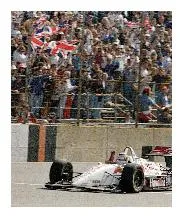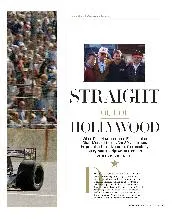A persistent practice misfire and having to use the old car meant Mansell started 18th, but come the race he vaulted to 12th on lap one, which became ninth after three tours. There he sat for a time, and came alive later on a long strategy, making a late refueling stop.
He emerged from his halt in fifth behind René Arnoux’s Ferrari and quickly disposed of him in spectacular style to finish fourth.
But Mansell reckoned it could have been even better. A wheel balance weight had fallen off on lap one, and Mansell reckoned it cost him around a second a lap for the rest of that stint. That was 43 laps’ long, and he finished 39sec behind the winner…
1985 South African Grand Prix

Nigel Mansell leads the field into the first corner
Motorsport Images
It is one thing to achieve success; quite another to sustain it. The transformative effect of Mansell’s first ever F1 win, the 1985 European Grand Prix at Brands Hatch, is often noted. But arguably the next win, at the next race in South Africa, was more pivotal. This one was under sustained pressure. And it confirmed that Mansell was here to stay as a race victor.


















